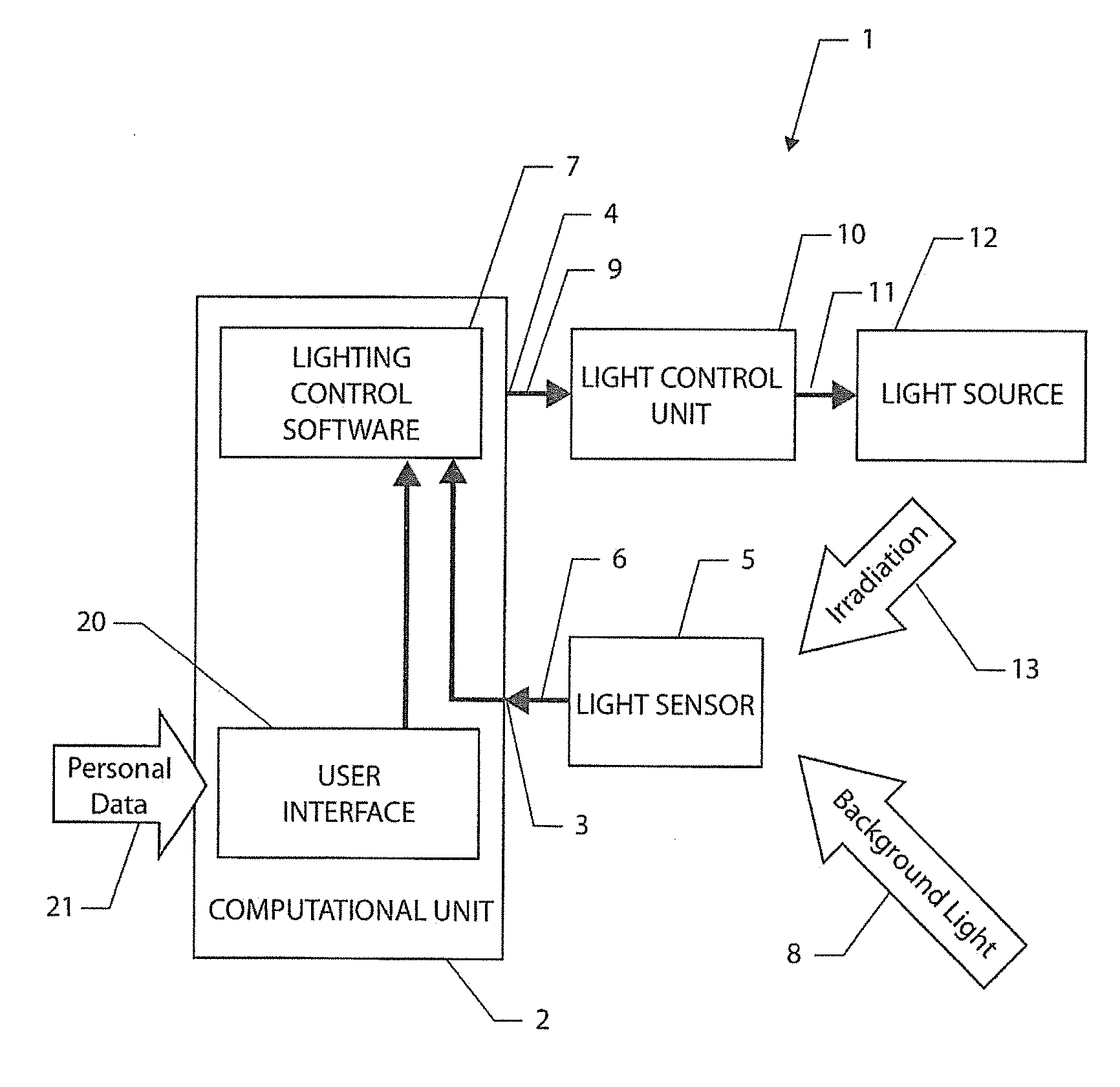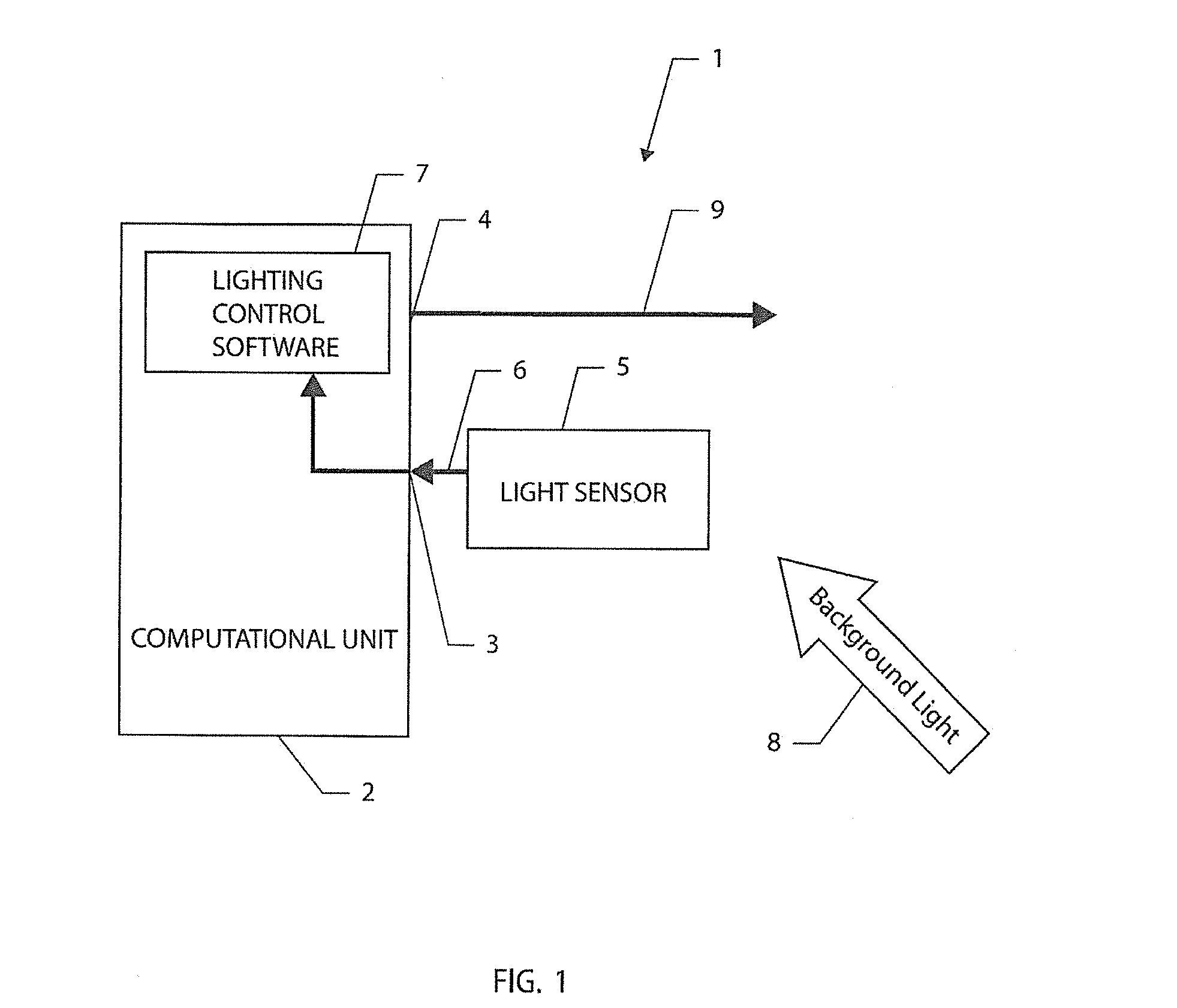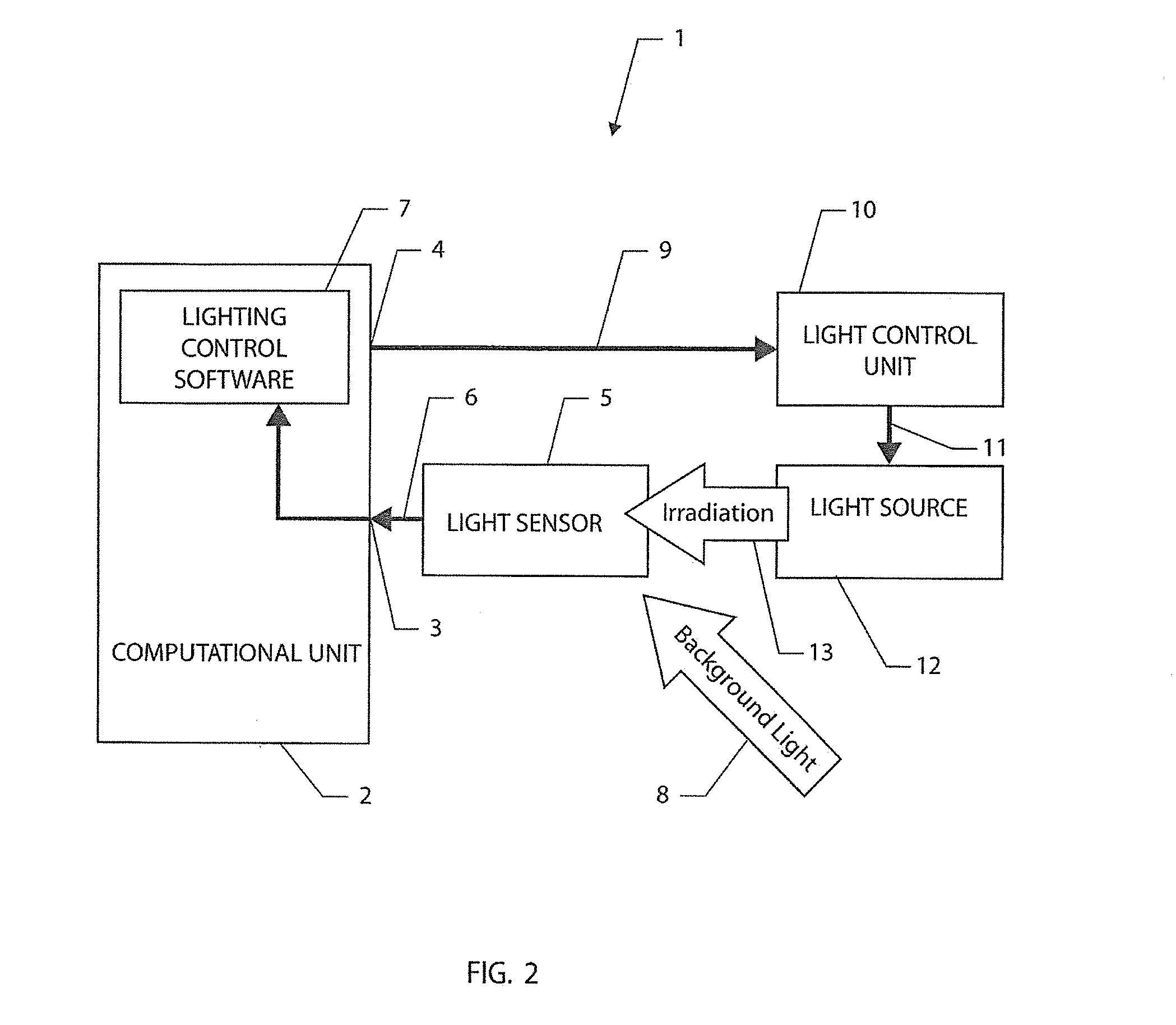Personalized lighting control
- Summary
- Abstract
- Description
- Claims
- Application Information
AI Technical Summary
Benefits of technology
Problems solved by technology
Method used
Image
Examples
Embodiment Construction
[0191]FIG. 20 illustrates one embodiment of a lighting system 1000. The lighting system 1000 provides an output control parameter for controlling the light output of a lamp 1008 described elsewhere in this disclosure. The lighting system 1000 has a computational unit 1006 and a time detector or unit 1002 connected to the computational unit 1006. The time detector or unit 1002 provides the Coordinated Universal Time (UTC) corrected for daylight saving time (summer / winter time) and the time zone in which the lighting system is located as the current time 1010. The time detector or unit 1002 communicates the current time 1010 to the computational unit 1006.
[0192]The lighting system 1000 further has a user interface 1004 connected to the computational unit 1006. The user interface 1004 allows the specific user to manually specify if he or she is a person of type A or B (as described elsewhere in this disclosure), from which the user interface generates a type parameter 1012. The user in...
PUM
 Login to View More
Login to View More Abstract
Description
Claims
Application Information
 Login to View More
Login to View More - R&D
- Intellectual Property
- Life Sciences
- Materials
- Tech Scout
- Unparalleled Data Quality
- Higher Quality Content
- 60% Fewer Hallucinations
Browse by: Latest US Patents, China's latest patents, Technical Efficacy Thesaurus, Application Domain, Technology Topic, Popular Technical Reports.
© 2025 PatSnap. All rights reserved.Legal|Privacy policy|Modern Slavery Act Transparency Statement|Sitemap|About US| Contact US: help@patsnap.com



